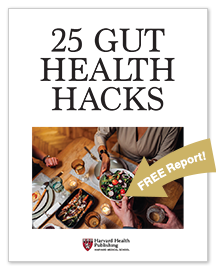
5 timeless habits for better health

What are the symptoms of prostate cancer?

Is your breakfast cereal healthy?

When pain signals an emergency: Symptoms you should never ignore

Does exercise give you energy?

Acupuncture for pain relief: How it works and what to expect

How to avoid jet lag: Tips for staying alert when you travel

Biofeedback therapy: How it works and how it can help relieve pain

Best vitamins and minerals for energy

Should you take probiotics with antibiotics?
Pain Archive
Articles
Back pain? Moving more and sitting less may help
People who experience back pain may find some relief by increasing daily activity by 20 minutes and reducing daily sitting time by 40 minutes, according to a 2024 study.
Can a knee brace ease arthritis pain?
Braces help some people cope with the pain, swelling, and stiffness of knee osteoarthritis. Examples include a knee sleeve, a compressive or stretchy tube that provides warmth and might help reduce knee swelling; an unloader brace, a long frame that fits on top of the leg and helps reduce pain by redistributing pressure on the knee; and a patella tracking brace, which combines the approaches of both knee sleeves and unloader braces to reduce knee pain, swelling, and pressure at the kneecap (patella).
Regular walking can hamper low back pain recurrence
A 2024 study suggested that walking regularly may help stave off repeat episodes of low back pain.
The end of painful sitting
Older adults typically sit for about 65% to 80% of their waking hours. One problem of prolonged sitting is pain due to gluteal amnesia. It occurs from a weak gluteus medius—one of the three gluteal muscles that help stabilize the pelvis and maintain the body's proper alignment. Moving more often during the day and doing exercises that strengthen weak gluteal muscles can help prevent this problem.
Take control of your knee pain
Regular exercise and stretching can reduce knee pain related to some common conditions. Exercises that strengthen muscle groups in the upper and lower legs, hips, and core can help them better support the knee and improve movement. Strength-building exercises should be done at least two days a week, and stretches should be performed daily.
Big toe got you down? It may be hallux rigidus
Hallux rigidus is stiffness in the big toe caused by arthritis in its joint. It can be treated with anti-inflammatory medication or sometimes a corticosteroid injection, but if these measures are unsuccessful, surgery may be necessary.

5 timeless habits for better health

What are the symptoms of prostate cancer?

Is your breakfast cereal healthy?

When pain signals an emergency: Symptoms you should never ignore

Does exercise give you energy?

Acupuncture for pain relief: How it works and what to expect

How to avoid jet lag: Tips for staying alert when you travel

Biofeedback therapy: How it works and how it can help relieve pain

Best vitamins and minerals for energy

Should you take probiotics with antibiotics?
Free Healthbeat Signup
Get the latest in health news delivered to your inbox!
Sign Up











